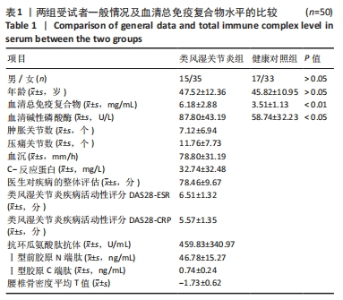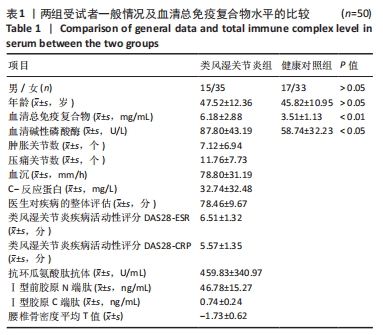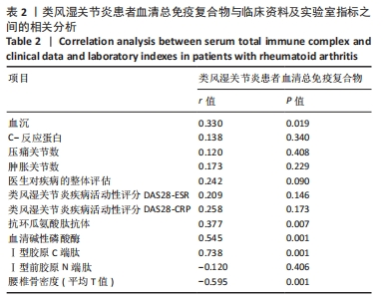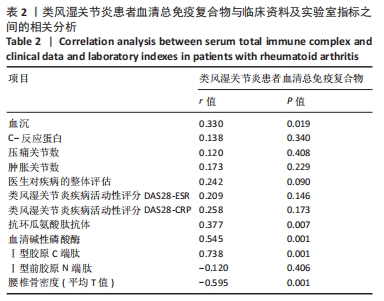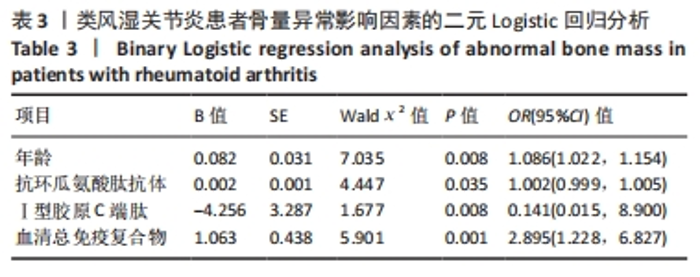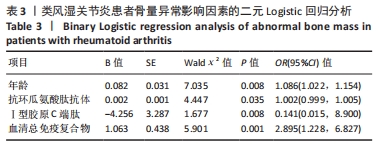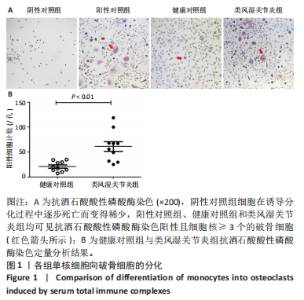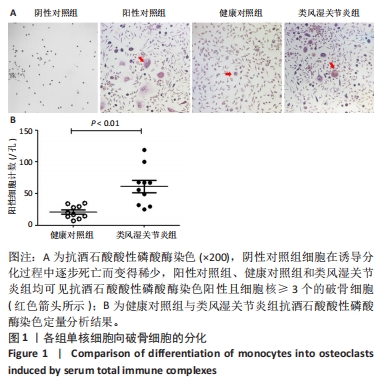[1] WYSHAM KD, BAKER JF, SHOBACK DM. Osteoporosis and fractures in rheumatoid arthritis. Curr Opin Rheumatol. 2021;33(3):270-276.
[2] ADAMI G, FASSIO A, ROSSINI M, et al. Osteoporosis in Rheumatic Diseases. Int J Mol Sci. 2019;20(23):5867.
[3] BAKER R, NARLA R, BAKER JF, et al. Risk factors for osteoporosis and fractures in rheumatoid arthritis. Best Pract Res Clin Rheumatol. 2022; 36(3):101773.
[4] RÖNNELID J, TURESSON C, KASTBOM A. Autoantibodies in Rheumatoid Arthritis - Laboratory and Clinical Perspectives. Front Immunol. 2021; 12:685312.
[5] CUNNINGHAM KY, HUR B, GUPTA VK, et al. Patients with ACPA-positive and ACPA-negative rheumatoid arthritis show different serological autoantibody repertoires and autoantibody associations with disease activity. Sci Rep. 2023;13(1):5360.
[6] ANDREEV D, KACHLER K, SCHETT G, et al. Rheumatoid arthritis and osteoimmunology: The adverse impact of a deregulated immune system on bone metabolism. Bone. 2022;162:116468.
[7] ZENG KQ, GONG FY, PAN XH, et al. IgG Immunocomplexes Drive the Differentiation of a Novel Subset of Osteoclasts Independent of RANKL and Inflammatory Cytokines. J Bone Miner Res. 2021;36(6):1174-1188.
[8] ALETAHA D, NEOGI T, SILMAN AJ, et al. 2010 Rheumatoid arthritis classification criteria: an American College of Rheumatology/European League Against Rheumatism collaborative initiative. Arthritis Rheum. 2010;62(9):2569-2581.
[9] KANIS JA, MELTON LJ 3RD, CHRISTIANSEN C, et al. The diagnosis of osteoporosis. J Bone Miner Res. 1994;9(8):1137-1141.
[10] BOYLE WJ, SIMONET WS, LACEY DL. Osteoclast differentiation and activation. Nature. 2003;423(6937):337-342.
[11] KIM JM, LIN C, STAVRE Z, et al. Osteoblast-Osteoclast Communication and Bone Homeostasis. Cells. 2020;9(9):2073.
[12] MAEDA K, YOSHIDA K, NISHIZAWA T, et al. Inflammation and Bone Metabolism in Rheumatoid Arthritis: Molecular Mechanisms of Joint Destruction and Pharmacological Treatments. Int J Mol Sci. 2022; 23(5):2871.
[13] WANG T, HE C. TNF-ɑ and IL-6: The Link between Immune and Bone System. Curr Drug Targets. 2020;21(3):213-227.
[14] CHEN Z, BOZEC A, RAMMING A, et al. Anti-inflammatory and immune-regulatory cytokines in rheumatoid arthritis. Nat Rev Rheumatol. 2019; 15(1):9-17.
[15] NEGISHI-KOGA T, GOBER HJ, SUMIYA E, et al. Immune complexes regulate bone metabolism through FcRγ signaling. Nat Commun. 2015; 6:6637.
[16] ORSOLINI G, VIAPIANA O, ROSSINI M, et al. Anti-CCP antibodies and bone. Arthritis Res Ther. 2018;20(1):63.
[17] KUROWSKA W, SLOWINSKA I, KROGULEC Z, et al. Antibodies to Citrullinated Proteins (ACPA) Associate with Markers of Osteoclast Activation and Bone Destruction in the Bone Marrow of Patients with Rheumatoid Arthritis. J Clin Med. 2021;10(8):1778.
[18] HARRE U, GEORGESS D, BANG H, et al. Induction of osteoclastogenesis and bone loss by human autoantibodies against citrullinated vimentin. J Clin Invest. 2012;122(5):1791-1802.
[19] ARIPOVA N, DURYEE MJ, ENGLAND BR, et al. Citrullinated and malondialdehyde-acetaldehyde modified fibrinogen activates macrophages and promotes an aggressive synovial fibroblast phenotype in patients with rheumatoid arthritis. Front Immunol. 2023;14:1203548.
[20] REED E, HEDSTRÖM AK, HANSSON M, et al. Presence of autoantibodies in “seronegative” rheumatoid arthritis associates with classical risk factors and high disease activity. Arthritis Res Ther. 2020;22(1):170.
[21] ADEJUYIGBE B, KALLINI J, CHIOU D, et al. Osteoporosis: Molecular Pathology, Diagnostics, and Therapeutics. Int J Mol Sci. 2023;24(19): 14583.
[22] SCHINI M, VILACA T, GOSSIEL F, et al. Bone Turnover Markers: Basic Biology to Clinical Applications. Endocr Rev. 2023;44(3):417-473.
[23] BROWN JP, DON-WAUCHOPE A, DOUVILLE P, et al. Current use of bone turnover markers in the management of osteoporosis. Clin Biochem. 2022;109-110:1-10.
[24] TAKADA J, DINAVAHI R, MIYAUCHI A, et al. Relationship between P1NP, a biochemical marker of bone turnover, and bone mineral density in patients transitioned from alendronate to romosozumab or teriparatide: a post hoc analysis of the STRUCTURE trial. J Bone Miner Metab. 2020;38(3):310-315.
[25] CAVALIER E, EASTELL R, JØRGENSEN NR, et al.. A multicenter study to evaluate harmonization of assays for C-terminal telopeptides of type I collagen (ß-CTX): a report from the IFCC-IOF Committee for Bone Metabolism (C-BM). Calcif Tissue Int. 2021;108(6):785-797.
[26] TIAN LL, FENG ZP. Research progress in bone turnover markers. Chin J Osteop. 2022;28(5):755-759.
[27] WANG Q, CHEN DC. An interpretation of Guidelines for the Clinical Applications of Bone Metabolic Biochemical Markers. Chin Gen Pract. 2016;19(33):4151-4152.
[28] 廖二元,徐苓,朱汉民,等.原发性骨质疏松症干预的疗效监测与评估专家意见[J].中华骨质疏松和骨矿盐疾病杂志,2015,8(1):1-6.
[29] SZULC P, NAYLOR K, HOYLE NR, et al. National Bone Health Alliance Bone Turnover Marker Project. Use of CTX-I and PINP as bone turnover markers: National Bone Health Alliance recommendations to standardize sample handling and patient preparation to reduce pre-analytical variability. Osteoporos Int. 2017;28(9):2541-2556.
[30] SHU J, TAN A, LI Y, et al. The correlation between serum total alkaline phosphatase and bone mineral density in young adults. BMC Musculoskelet Disord. 2022;23(1):467.
[31] WU Y, PAN W, HU X, et al. The prospects for targeting FcR as a novel therapeutic strategy in rheumatoid arthritis. Biochem Pharmacol. 2021; 183:114360.
[32] BEN MKADDEM S, BENHAMOU M, MONTEIRO RC. Understanding Fc Receptor Involvement in Inflammatory Diseases: From Mechanisms to New Therapeutic Tools. Front Immunol. 2019;10:811.
[33] LI X, GIBSON AW, KIMBERLY RP. Human FcR polymorphism and disease. Curr Top Microbiol Immunol. 2014;382:275-302.
|
